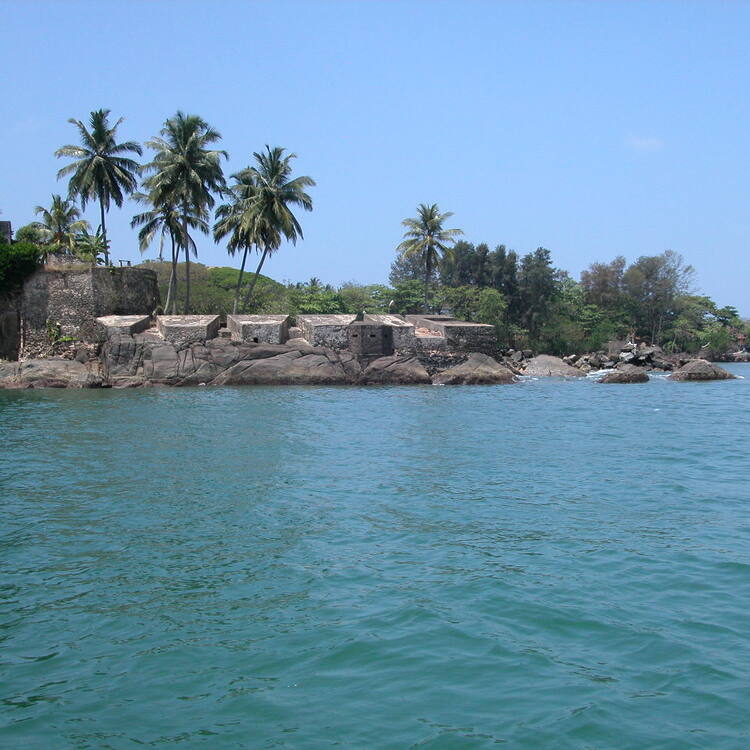Old Town of Galle and its Fortifications
Old Town of Galle and its Fortifications
Founded in the 16th century by the Portuguese, Galle reached the height of its development in the 18th century, before the arrival of the British. It is the best example of a fortified city built by Europeans in South and South-East Asia, showing the interaction between European architectural styles and South Asian traditions.
Description is available under license CC-BY-SA IGO 3.0
Vieille ville de Galle et ses fortifications
Fondée au XVIe siècle par les Portugais, Galle a atteint son apogée au XVIIIe siècle, avant l'arrivée des Britanniques. C'est le meilleur exemple d'une ville fortifiée construite par les Européens en Asie du Sud et du Sud-Est qui illustre l'interaction entre l'architecture européenne et les traditions de l'Asie du Sud.
Description is available under license CC-BY-SA IGO 3.0
مدينة غال القديمة وتحصيناتها
تأسست غال على يد البرتغاليين في القرن السادس عشر لكنها بلغت أوجها في القرن الثامن عشر قبل وصول البريطانيين إليها. وهي تشكل المثال الأفضل للمدن المحصنة التي بناها الاوروبيون في جنوب وجنوب شرق آسيا والتي تجسد التفاعل بين الهندسة الاوروبية وتقاليد جنوب آسيا.
source: UNESCO/CPE
Description is available under license CC-BY-SA IGO 3.0
加勒老城及其堡垒
加勒老城始建于16世纪,由葡萄牙人所建,在18世纪时达到鼎盛时期,在英国人入侵之后,开始逐渐衰败。加勒老城由南欧人和东南亚人共同修建,是一个融合了欧洲和南亚传统建筑风格的典型堡垒城市。
source: UNESCO/CPE
Description is available under license CC-BY-SA IGO 3.0
Старая часть и укрепления города Галле
Основанный в XVI в. португальцами, город достиг своего расцвета в XVIII в., перед тем, как перейти к англичанам. Это лучший пример укрепленного города, построенного европейцами в Южной и Юго-Восточной Азии, демонстрирующий взаимосвязь между архитектурными стилями Европы и традициями Южной Азии.
source: UNESCO/CPE
Description is available under license CC-BY-SA IGO 3.0
Ciudad vieja de Galle y sus fortificaciones
Fundada por los portugueses en el siglo XVI, Galle alcanzó su apogeo en el siglo XVIII, antes de la llegada de los británicos. Es el mejor ejemplo de ciudad fortificada construida por los europeos en el Asia Meridional y Sudoriental, en la que se puede apreciar la interacción de la arquitectura europea y las tradiciones arquitectónicas y artísticas del sur de Asia.
source: UNESCO/CPE
Description is available under license CC-BY-SA IGO 3.0
ゴール旧市街とその要塞群
source: NFUAJ
Oude stad van Galle en haar vestingwerken
Galle werd in de 16e eeuw gesticht door de Portugezen. Na de inname door Nederlanders werd de stad versterkt met muren en veertien bastions. Galle bereikte het hoogtepunt van haar ontwikkeling in de 18e eeuw, voor de komst van de Britten. Het is het beste voorbeeld van een versterkte stad gebouwd door Europeanen in Zuid en Zuidoost Azië. Het laat de wisselwerking zien tussen Europese bouwstijlen en Zuid-Aziatische tradities. Het grootste deel van de muren werd gebouwd in 1663. De noordelijke versterkte poort, beschermd door een ophaalbrug en een gracht, stamt uit 1669.
Source: unesco.nl
Outstanding Universal Value
Brief synthesis
Old Town of Galle and its Fortifications is situated on a small rocky promontory on the southwest coast of Sri Lanka. Founded in the 16th century by the Portuguese as a fortified town, Galle reached the height of its development in the 18th century under Dutch colonial rule. It is the best representation of a fortified city built by the Europeans in South Asia, showing the interaction between European planning principles and South Asian architectural traditions. Its street grid represents the typical Dutch tradition of parcelling out blocks with the purpose of creating clusters of buildings within a limited area. Rows of houses with their narrow sides facing the streets and verandas shaded by high overhanging roofs supported on slender columns create distinctive streetscapes. These characteristics, along with internal courtyards, are among the adopted South Asian elements that create the settlement’s unique character. The Old Town also consists of public and administrative buildings that reflect colonial architectural characteristics, but are composed in a manner that is sensitive to the rest of the architectural fabric. The monumental ramparts that fortify the town do not conform precisely to typical European geometric plans. Instead, they follow the existing morphology of the site, where rock outcrops are located within the promontory of Galle. Bastions located at strategic points both seaward and landward together with the ramparts reflect the fortification engineering knowledge developed by the Dutch in the unfamiliar South Asian terrain.
Criterion (iv): Galle provides an outstanding example of an urban ensemble which illustrates the interaction of European architecture and South Asian traditions from the 16th to the 19th centuries during the period of European expansion in Asia. The most salient feature is the use of European models adapted by local craftspeople to the geological, climatic, historical, and cultural conditions of Sri Lanka. In the structure of the ramparts, coral is frequently used along with granite. In the ground layout, all the measures of length, width, and height conform to the regional metrology. The narrow streets are lined with houses, each with its own garden and an open veranda supported by columns, another sign of the acculturation of an architecture which is European only in its basic design. Among the characteristics that make this an urban ensemble of exceptional value is the original underground drainage system still in use from the 17th century, which is flushed by tidal sea water.
Integrity
Within the boundaries of Old Town of Galle and its Fortifications are elements and components related to town planning, fortification engineering, and architecture that are necessary to express the Outstanding Universal Value of the property. The fortifications on all sides, which define the property, ensure the complete representation of all features and convey the totality of the value. The physical fabric of these elements is in good condition and has been preserved to express the value.
Authenticity
The form and design of the original town plan, with its street grid, facades, and the scales of the streetscapes, truly reflect the value of the old town. The architectural form and design as well as the construction materials and techniques of the public and administrative buildings are well preserved. The military design and the construction technique and materials of the ramparts and bastions are also well preserved. The location and setting of the town and its fortifications in relation to its seascape and landscape are also well preserved. Although the original military function has ceased at present, the property still retains its original residential and public/ administrative uses. The property has therefore retained its authenticity.
Protection and management requirements
The fortifications and some of the public buildings are under the legal ownership of the Department of Archaeology of the Government of Sri Lanka, which administers the Antiquities Ordinance of 1948 (rev. 1998) at the national level. Some selected houses and other buildings are declared as protected monuments under the provision of the Antiquities Ordinance, while most houses remain as private properties. As per the Antiquities Ordinance, no interventions are allowed within 400 yards (366 metres) of a declared monument, and the whole extent of the fort is covered by this regulation. The Department of Archaeology therefore has control over the whole property. In addition, provisions of the Urban Development Authority Law are being applied for better planning control of the property. The Galle Heritage Foundation was created in 1994 under an Act of Parliament with a view to bring all the stakeholders and partners under one umbrella for effective conservation and management of the property.
The long-term challenge is to sustain the Outstanding Universal Value of the property as a living city, providing for modern living standards and managing the demand for new uses without compromising the various aspects of its authenticity mentioned above; this is being handled carefully by the Galle Heritage Foundation whose Board of Management is comprised of all the stakeholders including the Department of Archaeology, Urban Development Authority, etc.



